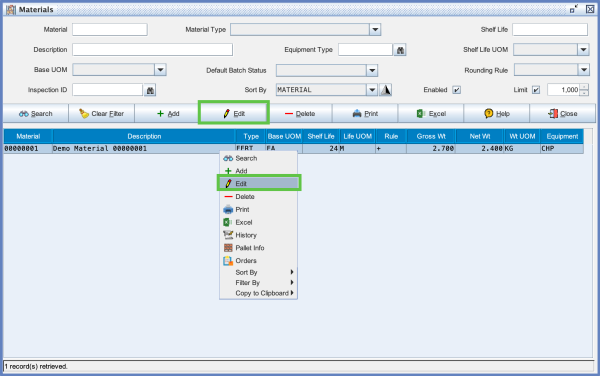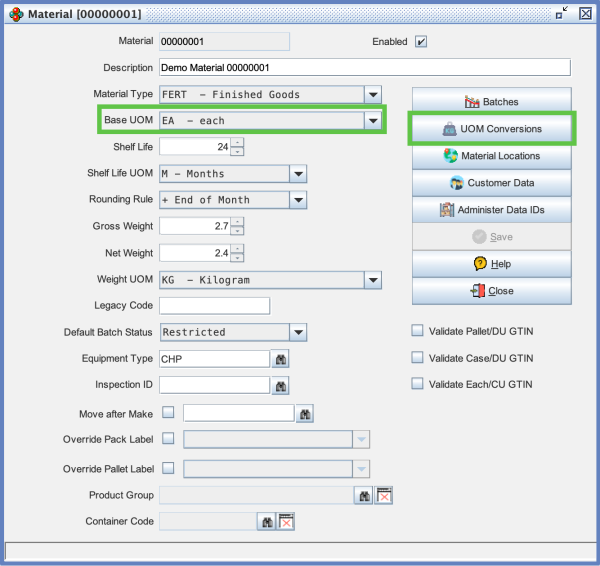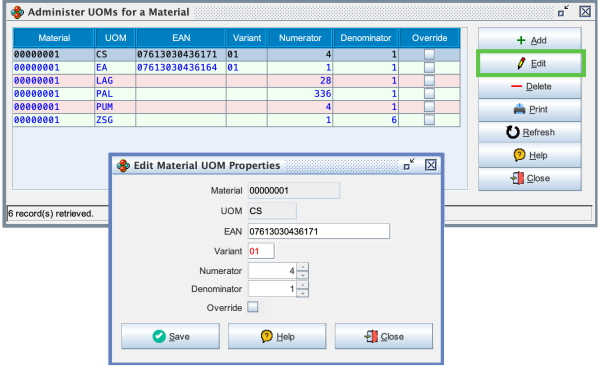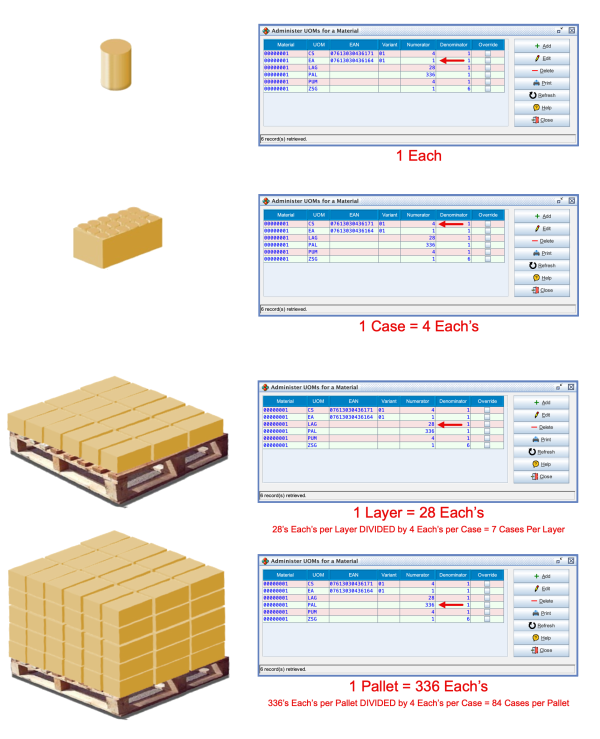Material UOMs: Difference between revisions
Created page with "These screens allow you to define the Units of Measure which can be used with each material. A typical scenario where you would want to be able to convert from one unit of measure into another would be during the manufacturing process. The production line is asked to produce 1000 cases, however they need to convert that into individual items which could be many more. For example if they need 1000 cases but each case contains 4 each's then that means they need to manufa..." |
No edit summary |
||
| Line 3: | Line 3: | ||
A typical scenario where you would want to be able to convert from one unit of measure into another would be during the manufacturing process. The production line is asked to produce 1000 cases, however they need to convert that into individual items which could be many more. For example if they need 1000 cases but each case contains 4 each's then that means they need to manufacture 4000 each's. On the packing line they put cases onto pallets and the software needs to know how many each's will be on each pallet. | A typical scenario where you would want to be able to convert from one unit of measure into another would be during the manufacturing process. The production line is asked to produce 1000 cases, however they need to convert that into individual items which could be many more. For example if they need 1000 cases but each case contains 4 each's then that means they need to manufacture 4000 each's. On the packing line they put cases onto pallets and the software needs to know how many each's will be on each pallet. | ||
[[file:Material_UOM1.png|600px]] | [[file:Material_UOM1.png|link=|600px]] | ||
To setup this information use the Material Admin screen to edit the required material as shown above. | To setup this information use the Material Admin screen to edit the required material as shown above. | ||
[[file:Material_UOM2.png|600px]] | [[file:Material_UOM2.png|link=|600px]] | ||
Click on the UOM Conversions button. | Click on the UOM Conversions button. | ||
[[file:Material_UOM4.png|600px]] | [[file:Material_UOM4.png|link=|600px]] | ||
A table then appears which allows you to define each Unit of Measure which is needed for the Material and the quantity of "Base UOMs" which that unit equates to. You will see that the Base Unit is defined within the main material screen. | A table then appears which allows you to define each Unit of Measure which is needed for the Material and the quantity of "Base UOMs" which that unit equates to. You will see that the Base Unit is defined within the main material screen. | ||
| Line 17: | Line 17: | ||
The following illustrates an example material and how the values relate. You should note that each unit can also have the appropriate EAN-128 GTIN code recorded against it. This will be used by the Case and Pallet printing modules. | The following illustrates an example material and how the values relate. You should note that each unit can also have the appropriate EAN-128 GTIN code recorded against it. This will be used by the Case and Pallet printing modules. | ||
[[file:Material_UOM5.png|600px]] | [[file:Material_UOM5.png|link=|600px]] | ||
Revision as of 11:41, 23 August 2024
These screens allow you to define the Units of Measure which can be used with each material.
A typical scenario where you would want to be able to convert from one unit of measure into another would be during the manufacturing process. The production line is asked to produce 1000 cases, however they need to convert that into individual items which could be many more. For example if they need 1000 cases but each case contains 4 each's then that means they need to manufacture 4000 each's. On the packing line they put cases onto pallets and the software needs to know how many each's will be on each pallet.

To setup this information use the Material Admin screen to edit the required material as shown above.

Click on the UOM Conversions button.

A table then appears which allows you to define each Unit of Measure which is needed for the Material and the quantity of "Base UOMs" which that unit equates to. You will see that the Base Unit is defined within the main material screen.
The following illustrates an example material and how the values relate. You should note that each unit can also have the appropriate EAN-128 GTIN code recorded against it. This will be used by the Case and Pallet printing modules.
